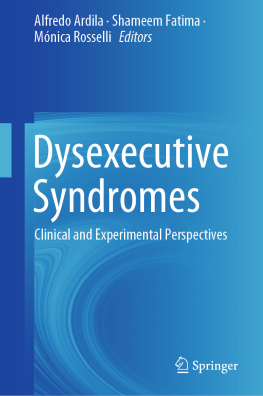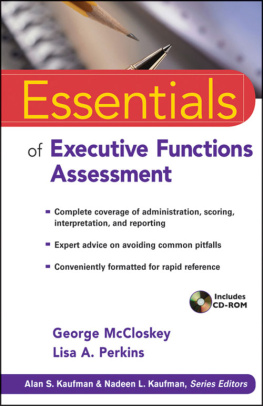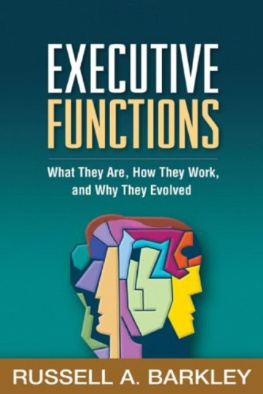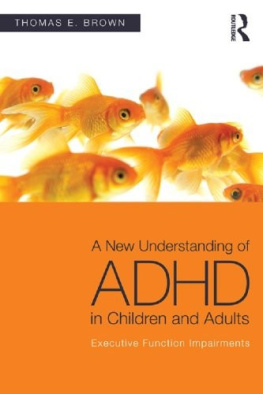Editors
Alfredo Ardila
Sechenov University, Moscow, Russia
Albizu University, Miami, FL, USA
Shameem Fatima
COMSATS University Islamabad, Lahore, Pakistan
Mnica Rosselli
Florida Atlantic University, Davie, FL, USA
ISBN 978-3-030-25076-8 e-ISBN 978-3-030-25077-5
https://doi.org/10.1007/978-3-030-25077-5
Springer Nature Switzerland AG 2019
This work is subject to copyright. All rights are reserved by the Publisher, whether the whole or part of the material is concerned, specifically the rights of translation, reprinting, reuse of illustrations, recitation, broadcasting, reproduction on microfilms or in any other physical way, and transmission or information storage and retrieval, electronic adaptation, computer software, or by similar or dissimilar methodology now known or hereafter developed.
The use of general descriptive names, registered names, trademarks, service marks, etc. in this publication does not imply, even in the absence of a specific statement, that such names are exempt from the relevant protective laws and regulations and therefore free for general use.
The publisher, the authors and the editors are safe to assume that the advice and information in this book are believed to be true and accurate at the date of publication. Neither the publisher nor the authors or the editors give a warranty, expressed or implied, with respect to the material contained herein or for any errors or omissions that may have been made. The publisher remains neutral with regard to jurisdictional claims in published maps and institutional affiliations.
This Springer imprint is published by the registered company Springer Nature Switzerland AG
The registered company address is: Gewerbestrasse 11, 6330 Cham, Switzerland
Introduction
Alfredo Ardila
Shameem Fatima
Mnica Rosselli
The term executive function is relatively new in the cognitive and behavioral neurosciences. Nonetheless, since the nineteenth century, it has been documented that frontal lobe damage can result in a wide range of cognitive and behavioral disturbances. Phineas Gage represents the best-known report of impairments potentially associated with frontal lobe pathology (Harlow, 1868). Toward the end of the nineteenth century, Oppenheim (1890, 1891) associated personality disturbances with orbital and mesial frontal lobe pathology. The frontal lobe syndrome was conceptualized during the early twentieth century by Feuchtwanger (1923). He proposed that frontal lobe pathologies were associated with disturbances that were not directly related to memory, language, speech, or sensorimotor deficits. Goldstein (1944) suggested that the capacity of the frontal lobe includes the abstract attitude, mental flexibility, and understanding of the contextual situation of behavior. Luria (1969, 1980) referred to three functional units in the brain: (1) arousal-motivation (limbic and reticular systems); (2) receiving, processing, and storing information (postrolandic cortical areas); and (3) programming, controlling, and verifying activity (frontal lobes). Luria suggested that the third unit has an executive role. Lezak (1983) emphasized the fluid nature of executive functioning and observed that both cognitive and emotional aspects were involved.
In recent years, cognitive neuroscience, particularly neuropsychology, has used the term executive functions as an umbrella term to describe several interrelated higher cognitive processes such as inhibitory control, working memory, behavioral temporality, cognitive flexibility, planning, self-regulation, monitoring, and similar behavioral and cognitive functions. These functions play a significant role in the successful production of goal-oriented behaviors as well as in the successful performance of daily activities. Executive or cognitive control is a related term that refers to a complex set of cognitive processes working in a top-down functioning mechanism (Diamond, 2013). Cognitive control is an essential life skill that helps in problem-solving, attention holding and control, learning, decision-making, planning, and regulating behaviors (Chung et al. 2014).
Regarding neuroanatomical correlates, the neuropsychological literature has described that executive functions are closely related to frontal lobe activity. Indeed, the term executive function has been used interchangeably with frontal lobe functioning. With the advent of advanced neuroimaging techniques, it has been found that successful performance of executive abilities is not only dependent on intact frontal lobe structure and functions but is also mediated by dynamic and functional connections between frontal regions, retro-Roladic, and subcortical areas of the brain (Ardila, Bernal, & Rosselli 2017; Chung et al. 2014; Collette et al. 2006; Bonelli & Cummings 2007; Marvel & Desmond 2010). The smooth and effective behavioral expression of intact executive functions depends on the functional integration and effective connections between cortical and subcortical regions.
During the last decades, a myriad of books dedicated to the analysis of executive functions have been published (e.g., Anderson, Jacobs & Anderson 2010; Eslinger & Flaherty 2018; Miller & Cummings 2017; Rabbitt 2004; Roberts, Robbins & Weiskrantz 1998; Tirapu-Ustrroz, Garca Molina, Ros-Lago & Ardila 2012). It is time to publish a book devoted to the analysis of the dysexecutive syndromes or executive dysfunctions. Baddeley (1986) coined the term dysexecutive syndrome to refer to the dysregulation of executive functions usually resulting from frontal lobe damage. The syndrome is represented in emotional, motivational, and behavioral problems as well as in cognitive deficiencies related to executive skills such as planning, mental flexibility, inhibition, and working memory. The symptoms of the syndrome can be seen in many clinical conditions, including neurodegenerative diseases such as frontotemporal dementia.
Executive dysfunction is described as a disturbance in the efficiency of higher regulatory executive functions (Elliott 2003) which may result in neurocognitive deficits and behavioral symptoms. The terms executive dysfunction and frontal lobe dysfunction have been some times used interchangeably based on clinical evidence from patients with brain injuries to frontal regions. However, evidence from more recent studies based on imaging techniques, including fMRI and PET scan, has suggested that executive dysfunction is not only associated with frontal lobe abnormalities, but also with the dysfunctional connections between frontal, retro-Rolandic, and subcortical brain regions (Bonelli & Cummings 2007; Chung et al. 2014).
Executive dysfunctions are also associated with a wide range of psychopathologies, including neurodevelopmental and traumatic brain injuries. The symptoms from neurodevelopmental disorders may include problems with inhibitory control, impulsivity, planning difficulties, working memory deficits, problems with sustained and selective attention, and deficits in mental flexibility. These clinical conditions include autism spectrum disorder, attention deficit hyperactivity disorder, fetal alcohol spectrum disorders, Tourette syndrome, and phenylketonuria (Jurado & Rosselli 2007).










